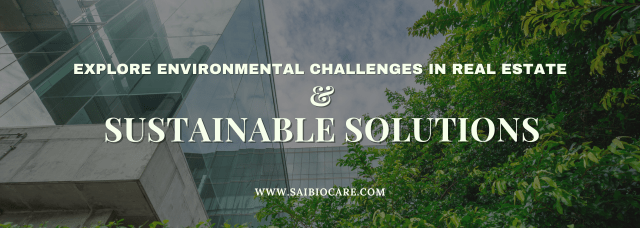Navigating Environmental Challenges in Real Estate Development

Real estate development is a complex process that often faces various environmental challenges. These challenges can impact project timelines, costs, and overall feasibility. Understanding and addressing these issues is crucial for sustainable and successful development. Here are some common environmental challenges in real estate development:
Land Contamination
One of the significant challenges is dealing with contaminated land. Previously used industrial sites, known as brownfields, may have hazardous substances in the soil or groundwater. Cleaning up these sites requires time, expertise, and substantial financial investment. Developers must conduct thorough environmental assessments to identify and remediate contamination.
Natural Resource Management
- Balancing development with the protection of wetlands, forests, and other sensitive ecosystems.
- Obtaining permits and complying with environmental impact assessments can be challenging.
- Mitigating the impact of construction on wildlife and habitats.
Climate Change and Sustainability
- Incorporating climate change resilience into development plans.
- Reducing the project’s carbon footprint through energy efficiency and renewable energy.
- Adapting to changing weather patterns and extreme events.
Water Management
- Proper storm water management systems are necessary to prevent flooding and erosion.
- Compliance with regulations regarding water usage and wastewater disposal is essential.
- Sustainable water management practices, such as rainwater harvesting and green roofs, can help mitigate challenges.
Waste Management
- Construction generates a large amount of waste, including debris, packaging, and hazardous materials.
- Effective waste management strategies, such as recycling, reusing materials, and proper disposal of hazardous waste, are essential.
- Reducing waste benefits the environment and reduces disposal costs.
Air Quality
- Construction activities release dust and pollutants, affecting workers and nearby residents.
- Implementing dust control measures and using low-emission construction equipment can help mitigate air quality issues.
- Ensuring proper ventilation and air purification in buildings can enhance indoor air quality.
Conclusion
Addressing these environmental challenges requires a proactive and integrated approach. Developers must work closely with environmental consultants, regulatory bodies, and local communities to ensure sustainable practices. By prioritizing environmental considerations, real estate developments can achieve long-term success and contribute positively to the environment. Sustainable development is not only beneficial for the planet but also for the health and well-being of future occupants and surrounding communities.
